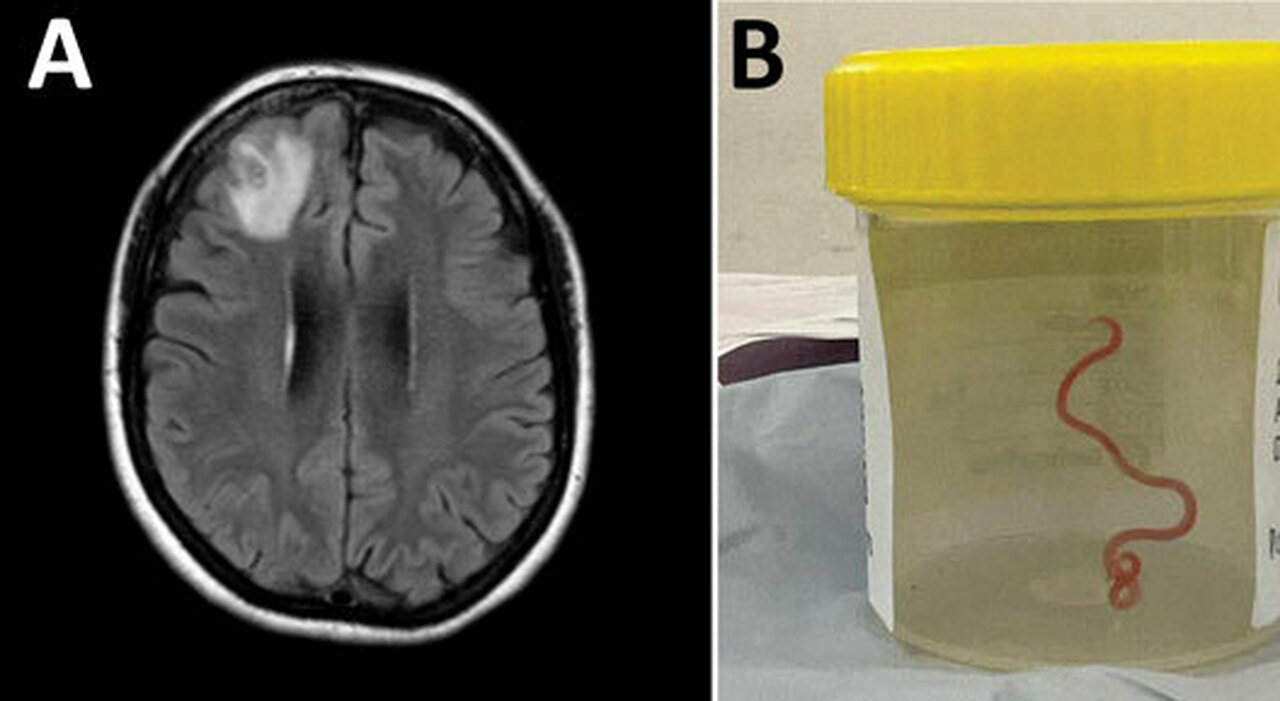A larva, a live worm, was discovered inside the brain of a 64-year-old patient. This shocking discovery was made by Hari Priya Pandey, a neurosurgeon at a hospital in Canberra, Australia. This amazing story was told by his colleague, infectious disease physician, Dr. Sanjaya Senanayake. «Oh my God, you won’t believe what I just found in this lady’s brain: He is alive and I see him writhingAnd this – according to the Guardian newspaper – is the summary of the phone call that the colleague received.
Neurosurgeon Priya Pandey removed a parasitic worm 8 cm long from her patient. Contact Senanayake to find out how to conduct post-operative treatment.
The patient is a 64-year-old woman from southeastern New South Wales (the state whose capital is Sydney) who was first admitted to her local hospital in late January 2021 after suffering three weeks of abdominal pain and diarrhea, followed by Persistent dry cough, fever, and night sweats.
And in 2022, his symptoms also included Memory lapses and depression Until she was admitted to Canberra Hospital.
And watch out, here comes the shocking discovery. An MRI of his brain revealed abnormalities that required surgery.
«But the neurosurgeon certainly didn’t go in there thinking they’d find a writhing worm“, He said Senanayake. «Neurosurgeons regularly deal with encephalitis, but this was an unprecedented discovery, never done before in his entire career.
What did the doctors do? They sent the worm, which was still alive, to the parasitologist’s lab. If he examined it, he said: «Oh my God, this is Ovidaskaris Robertsi».
A 4-year-old girl contracted Lyme disease in Benevento due to a tick bite: symptoms after days, erythema and severe pain
For the first time in the world the parasite Ophidacaris robertsi has been found in a human (usually found in snakes)
Ovidascaris Robertsi It is a parasite commonly found in snakes. A Canberra hospital patient represents the world’s first case of the parasite found in humans.
The patient resides near a lake where he lives snakes. Senanayake said that although it had no direct contact with the snake, it often collected local herbs to use in cooking.
The doctors and scientists involved in his case expect this The snake may have shed the parasite through its feces onto the grass. They believe the patient may have contracted the parasite directly from touching the grass or after eating it.
Senanayake told the Guardian that the patient needed treatment for other larvae that could invade other parts of her body, such as the liver. But since no patient has been treated for this parasite before, The treatment has been specially studied.
Senanayake said the patient is recovering well and continues to be monitored regularly. The researchers are investigating whether a pre-existing medical condition caused the infection with this caterpillar. The case was documented in the September issue of the magazine Emerging infectious diseases.
According to the US Centers for Disease Control and Prevention, three-quarters of new or emerging infectious diseases in humans come from animals.
Senanayake said the world’s first case highlighted the risk of disease and infection transmission from animals to humans, mainly People and animals begin to live more closely together and habitats overlap more.
A woman stung by a bumblebee dies in her husband’s arms: Piedmontese San Germano mourns Rosa Mattia
«Of the global emerging infections, approximately 75% are zoonotic diseasesWhich means that there has been a transition from the animal world to the human world. This includes coronaviruses. Ophidacaris infection is not transmissible between people, so this patient’s condition would not cause a pandemic like COVID-19 or Ebola. However, the snake and parasite are present in other parts of the world, so it is likely that more cases will be identified in other countries in the coming years.Senanayake explained.
Read the full article
on the messenger

“Reader. Travel maven. Student. Passionate tv junkie. Internet ninja. Twitter advocate. Web nerd. Bacon buff.”




